Ipoh Attraction Guide: What To Do In Ipoh
Ipoh is a bit of a hidden gem in Perak Malaysia. It has a street art and food scene to rival Penang, but with a fraction of the visitors, and is an easy weekend trip from Singapore. Other Ipoh attractions include enchanting laneways, grand colonial architecture and spectacular Ipoh cave temples. Get in before the rest of the world discovers Ipoh! Before you visit Ipoh, learn more about the best things to do in Ipoh.
Just want it all done for you? Cover all these Ipoh activities in just one day with an excellent Ipoh group tour or Ipoh private tour.
Note: This post contains affiliate links. This means that if you click a link, I may receive a small commission at no additional cost to you.
1. Ipoh Heritage Walk
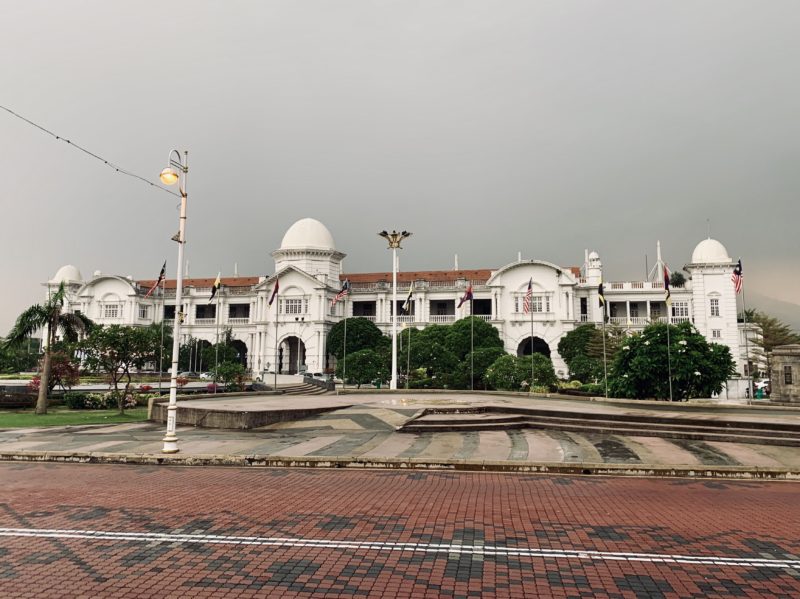
The Ipoh Heritage Walk covers all the most famous colonial buildings and places to visit in Ipoh. Pick up an Ipoh Heritage Trail map from the Ipoh Information Centre or online and set off on your way!
Some of the best spots on the Ipoh Heritage Walk are explained below.
Location: Mostly concentrated around Jalan Panglima Bukit Gantang Wahab, Jalan Dato Sagor and Jalan Dato Maharajalela.
Cost: Free
Ipoh Railway Station
The train station is usually the starting point on the Ipoh Heritage Trail. Ipoh Railway Station is a fully functioning train station, serving both passenger and freight trains. Not only functional, the Ipoh train station is also rather majestic (photo above).
Ipoh Station was originally built in 1894, and was replaced in 1917 . The building is British colonial in style, with a large central dome and various arches and columns.
The Ipoh War Memorial is located in front of Ipoh Railway Station. The cenotaph pays homage to soldiers from Perak who have died in wars from the time of the station, from WWI and WWII to the Malaysian Emergency and the Indonesian Confrontation.
Ipoh Town Hall and Old Post Office
Ipoh Town Hall and the Ipoh Old Post Office are across the road from Ipoh Train Station. The style is similar to the train station, having been designed by the same government architect and built in 1917.
Take a nosy inside the entrance of Ipoh Town Hall, and check out the photos of the Sultan of Perak and his wife. Take a stroll up the stairs (if the security guards don’t stop you!) and take in views of the Ipoh Railway Station from the balcony.
The Old Post Office is on the back side of the town hall.
Birch Memorial Clock
Birch Memorial Clock is just behind the Old Post Office, past a popular hawker centre. It’s a rather ornate clock with a somewhat grizzly history.
The Birch Memorial Clock tower was built in memorial to James W W Birch, who was the first British resident of the Malaysian State of Perak in the late 1800s. It was commissioned by his son at the then astronomical cost of $25,000.
The clock tower has four painted panels depicting men and women from civilisation throughout the ages. Journey through the Stone Age and Ancient Greece and Rome, all the way to modern arts and sciences with paintings of Issac Newton and Beethoven.
Look closely and you’ll notice that one image has been removed – that of the Prophet Muhammad facing the mosque. Pop around the other side of the clock and you’ll also see an empty space where Birch’s bust once sat. (According to my tour guide, no one knows exactly where it is now!)
Birch wasn’t exactly revered in all of Perak, and met an untimely death at the hands of Dato Maharajalela and his followers, who speared Birch to death while he was bathing. Grizzly indeed.
Dato Maharajalela and others implicated in the death were in turn hanged by the British. Those with eagle eyes will see that the street that the clock backs onto is now named Jalan Data Maharajalela.
2. Ipoh Street Art
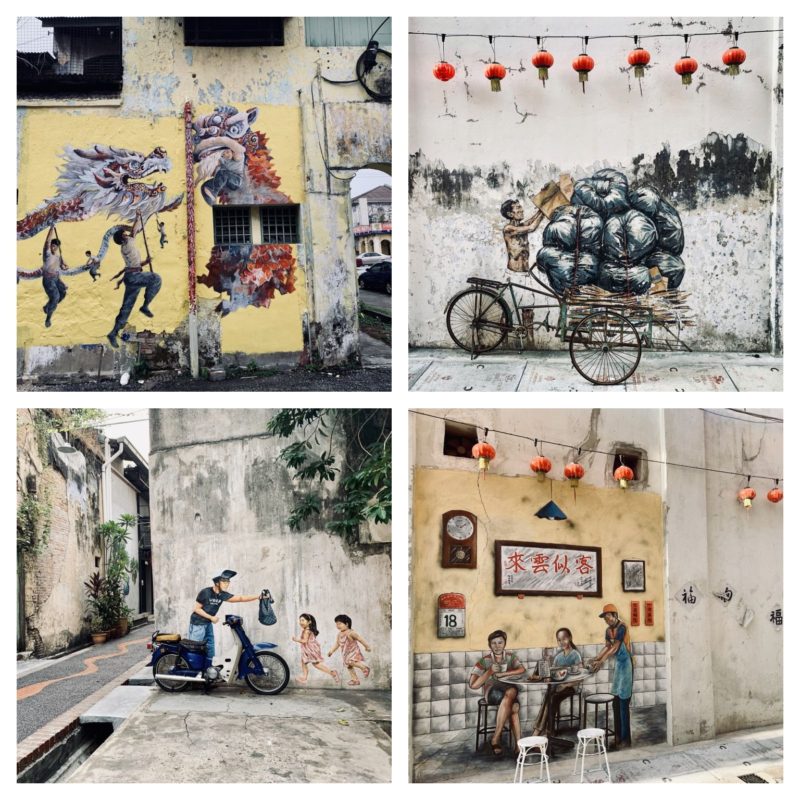
The Ipoh attraction that attracted me to Ipoh (see what I did there?) was Ipoh’s thriving street art scene which rivals nearby Penang. Not surprising given that many of the Ipoh murals were painted by Ernest Zacharevic, the same Lithuanian artist who painted the famous Penang street art.
Zacharevic has a very distinctive style. Look out for the 7 murals he painted, including the gorgeous hummingbird, wise looking uncle drinking coffee, irreverent boys riding a paper plane and a man stacking rubbish bags on the back of a trishaw.
As well as Zacharevic’s murals, there’s plenty of other Ipoh street art hidden around the laneways of Ipoh Old Town and Ipoh New Town.
You can grab an Ipoh Mural Art Trail map at the Ipoh Information Centre, or simply get lost in the Old Town’s alleyways. In Ipoh New Town, don’t miss Mural’s Art Lane which is filled with colourful art depicting local life and culture in Malaysia.
To some, Ipoh’s street art might look a little bit faded and dilapidated. To me, that only added to the beauty and uniqueness of the Ipoh mural art. The murals appear as though they’re slowly being lost in the ages to the time worn buildings, with faded colours, patchy images and wild vines overtaking the art.
Location: Scattered throughout Ipoh Old Town and concentrated down Mural’s Art Lane in Ipoh New Town.
Cost: Free
3. Concubine Lane Ipoh
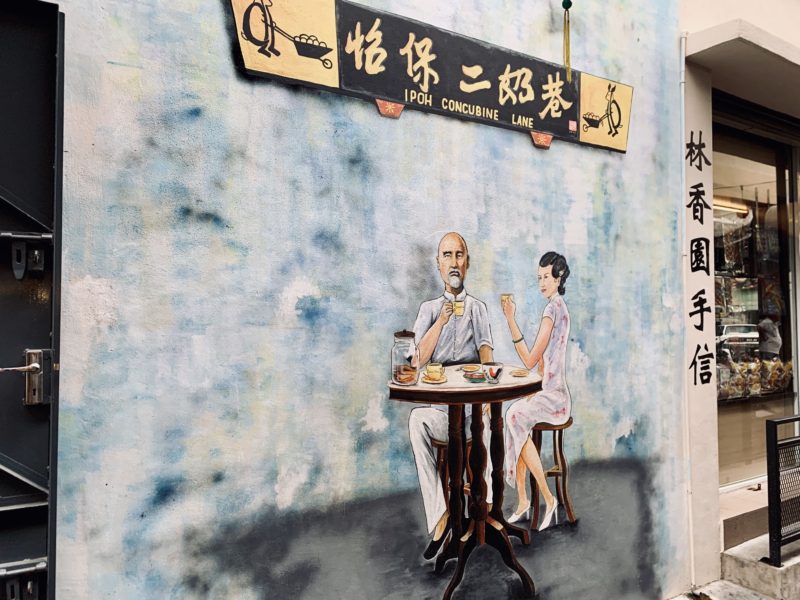
Concubine Lane is another famous laneway in Ipoh Old Town that has undergone a bit of a makeover in recent years. The narrow laneway is lined with stalls selling all sorts of trinkets and wares, along with little cafes and some street art.
When you’re strolling down this gentrified street, it’s a little hard to imagine that Concubine Lane once had a rather sordid history as its name suggests. After a fire destroyed Ipoh Old Town in 1892, a a mining magnate gave three little lanes to his three wives. The first wife received Lorong Hale, now known as ‘Wife Lane’; the second wife or concubine received Lorong Panglima, know known as Concubine Lane, and the third wife received Market Lane (see 4 below).
In the early 1900s, Concubine Lane became known as an opium den and street where men came to satisfy their vices – booze, gambling and women.
While Concubine Lane is one of the most popular things to do in Ipoh, I personally preferred Market Lane to the more touristy (and busy!) Concubine Lane. It’s best to visit Concubine Lane on a weekday or weekend morning before it becomes jammed with tourists.
Location: Concubine Lane, Ipoh Old Town
Cost: Free
4. Market Lane Ipoh
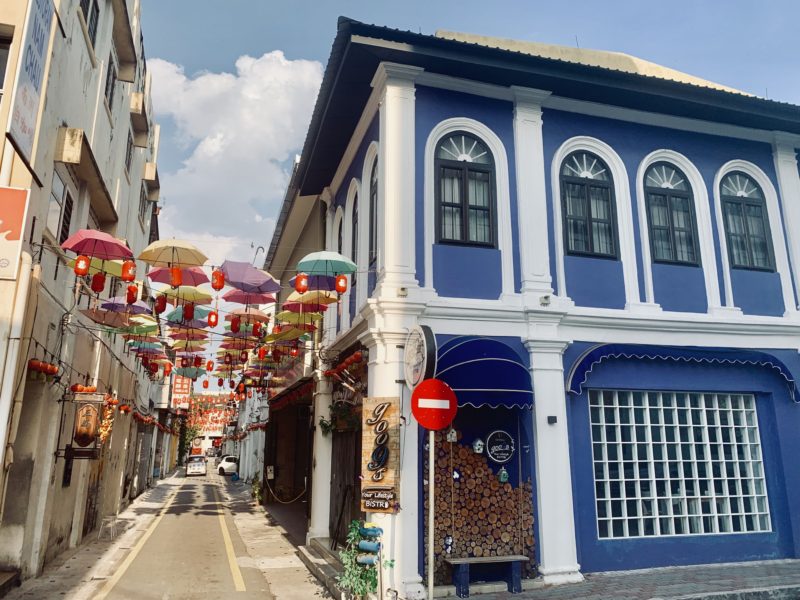
Market Lane in Ipoh Old Town was one of my favourite places to visit in Ipoh because it is just oh so pretty. The street has an overhead of colourful umbrellas and lanterns and is lined with funky street art, including Zacharevic’s man with trash.
There’s even a hidden speakeasy style bar down Market Lane. Wander down Market Lane after dark and have a drink at Tiga Bar (35 Market Lane). Tiga Bar wouldn’t be out of place in Tokyo or New York with its trendy decor and professional bartenders whipping up bespoke cocktails.
Market Lane isn’t filled with shops and cafes like Concubine Lane. Less shops = less tourists = more atmospheric and inviting in my books.
Location: Market Lane, Ipoh Old Town
Cost: Free
5. Ho Yan Hor Museum
Ho Yan Hor Museum tells the history and stories of Ho Yan Hor, a famous brand of Chinese herbal tea that was born in Ipoh in the 1940s. Ahhhm how can tea be so interesting I hear you ask?
Well it’s less about the tea and more about the intriguing story of of the tea’s founder Dr Ho. Dr Ho dedicated his life to the health benefits of herbal tea. His foray into tea started by brewing up a pot and selling it on the street to passing tin miners heading home after their shifts. This grew steadily over the years grew into a tea empire complete with factories and vans transporting tea around Malaysia.
The museum is small and well put together, with interesting story boards and photos to draw you into the life of Dr Ho and his iconic tea brand. After touring the museum, stick around to sample the goods.
One of Zacharevic’s famous Ipoh street murals is on the side of the Ho Yan Hor Museum.
If you have time, pop to the museum next door – Ipoh World at Han Chin Pet Soo, which tells the history of Ipoh and tin mining in the region.
Location: 1 Jalan Beijeh Timah. In Ipoh Old Town perpendicular to the east end of Concubine Lane.
Cost: Free
6. Ipoh Cave Temples
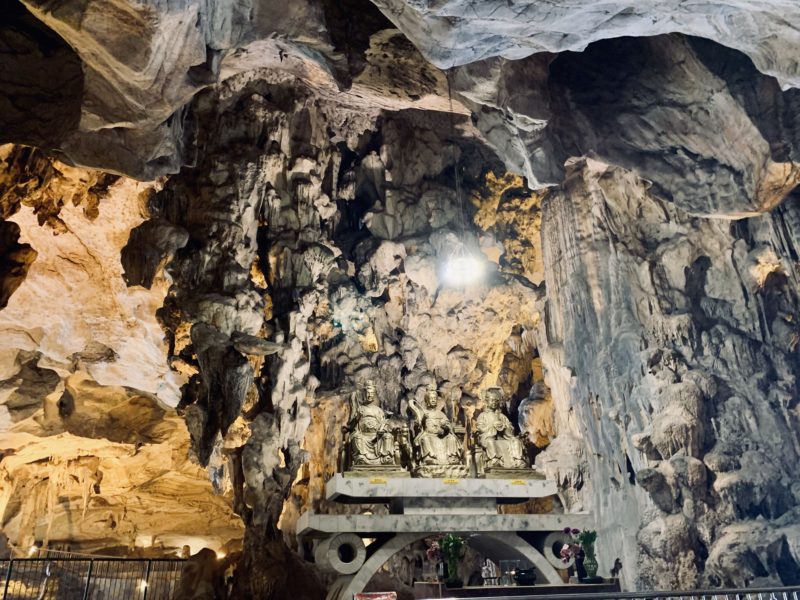
Ipoh has over 30 cave temples, which are mostly dedicated to Buddhist and Taoist gods. The Ipoh cave temples were built as a place of worship for the nearby tin workers.
The Ipoh temples are visually spectacular, having been built into and around natural limestone caves that have wide open chambers and dramatic rock formations. The cave temples are one of the most popular Ipoh attractions, and for good reason.
While in Ipoh, I visited Kok Lok Tong cave temple and Sam Poh Tong cave temple, as they’re in the same ‘hood. The other most popular Ipoh cave temple is the Perak Cave Temple to the north of the city.
Kek Lok Tong Cave Temple and Zen Garden
Kek Lok Tong (phot above) was my favourite Ipoh cave temple, as it has some of the most spectacular rock formations inside.
The cavernous chambers are full of natural stalactites and stalagmites and layers of rock and iron ore slowly built up over the years (okay, hundreds of years!). The cave also has man made statues of Buddhist and Chinese deities inside.
There’s a pretty zen garden around the back of Kek Lok Tong temple with a big lotus pond and walking trails.
Location: On the side of Gunung (Mount) Rapat, around 8km from Ipoh Old Town. You’ll need a taxi for this one!
Cost: Free. Donations welcome in the temple donation box.
Sam Poh Tong Cave Temple
Kek Lok Tong may be most impressive cave temple from the inside, but Sam Poh Kong wins hands down from the outside.
Sam Poh Kong cave temple is set against a backdrop of soaring limestone cliffs. Outside the cave, there’s a multi-storied Buddhist temple with intricate carvings and a beautiful garden and pond.
Inside the cave there’s … well not much. I found it a little underwhelming to be honest, as it was mainly an open cave with a few statues, but without the dramatic rock formations or ‘wow’ factor of Kek Lok Tong.
Pick up some tomatoes on your way into the cave for a few Malaysian Ringgit and feed the resident (and slightly snarky) turtles at the back of the cave.
Location: Sam Poh Tong is also on the side of Gunung Rapat, around 5km from Ipoh Old Town. Can be easily visited with Kek Lok Tong which is in the same mountain area.
Cost: Free. Donations welcome in the temple donation box.
7. Kellie’s Castle
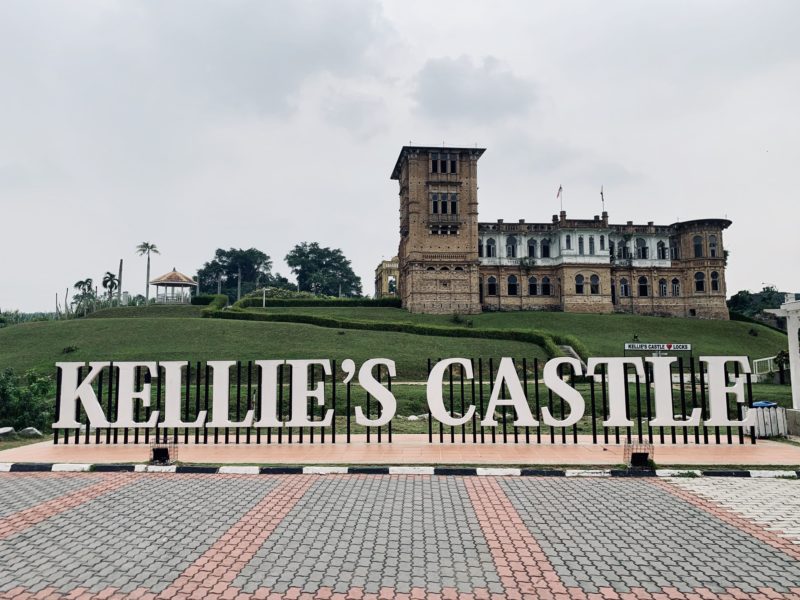
A half-finished, abandoned, bombed and allegedly haunted castle wasn’t exactly what I was expecting to find when I was researching what to do in Ipoh. But that’s exactly what Kellie’s Castle is!
Kellie’s Castle was built by William Kellie Smith, a Scotsman in Malaysia who made his fortune in rubber plantations in the early 1900s. Smith wanted to build a rather OTT castle for his family in the nearby Cameron Highlands. When that was denied, he settled on the Batu Gajah area in the Kinta district outside of Ipoh.
And OTT it was. The castle was built over several levels, with a rooftop area for entertaining dignitaries and important guests, and even a plan for Malaysia’s first elevator.
But ultimately it was not to be. Smith’s fortunes declined and he died of pneumonia in 1926 aged 56 before he could complete Kellie’s Castle. The castle was neglected and fell into disrepair, and was overtaken by the jungle. Kellie’s Castle was even bombed by the Japanese during WWII when they mistook it for a hidden fortress.
Today, you can explore the derelict interiors of Kellie’s Castle and wonder what might have been. While there’s not a lot on the inside of the castle, it’s nevertheless interesting to walk around and the history is pretty fascinating.
As well as the main castle, there’s a smaller original residence behind the castle which is now pretty much just a shell with walls. I found the original residence visually more interesting and beautiful to photograph, with its hollowed interiors and jungle backdrop.
Just down the road you may spot a colourful Hindu temple that Smith built as a place of worship for his Hindu workers. Look up to the figures on the top and you’ll even spot Smith dressed up in military regalia.
Location: Batu Gajah, around 20-30 minutes drive from Ipoh.
Cost: 10 RM for foreigners, 5 RM for Malaysians.
8. Masjid Panglima Kinta – Mosque of the General of Kinta
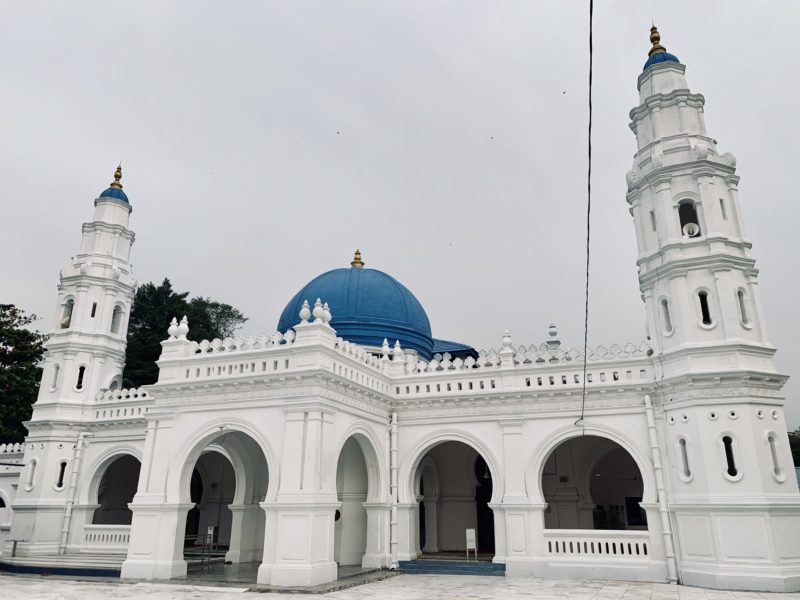
Masjid Panglima Kinta is a grand blue and white mosque that is named after the General of Kinta. The mosque is one of the buildings on the official Ipoh Heritage Trail, although obviously with a very different heritage to the other mainly colonial buildings.
The mosque welcomes visitors during visiting hours, or you can view the building from the outside at any time. Visiting hours are Saturday to Thursday 9am-12pm, 2-4pm and 5-6pm and Friday 9-11am, 3-4pm and 5-6pm. Be sure to dress respectfully if you want to go inside the mosque.
There’s also a Chinese Buddhist temple (Paloh Khoo Miu Temple) just across the river in the Old Town which is worth a nosy if you’re a temple boffin.
Location: Jalan Masjid in Ipoh New Town, just past the Kinta River that divides the Old Town and New Town. Combines well with Mural’s Art Lane which is one street over.
Cost: Free
9. Ipoh Food
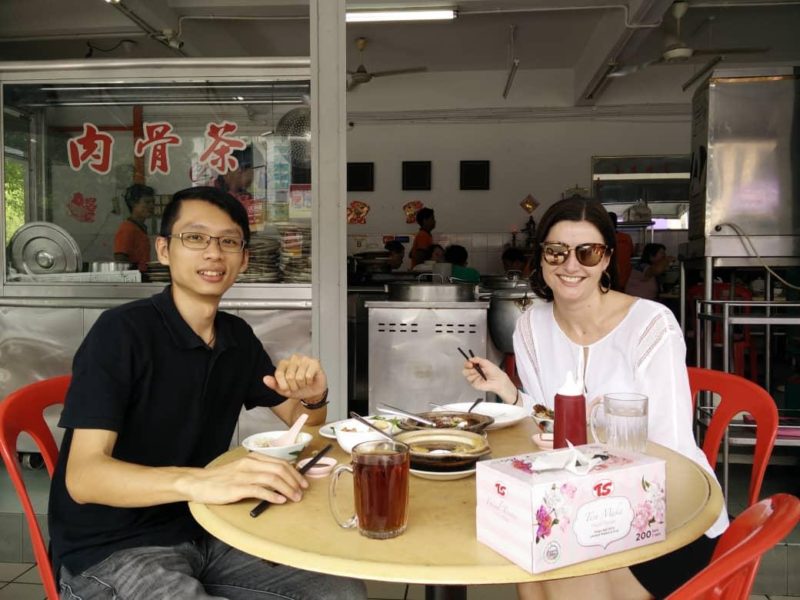
Singaporeans looked a little perplexed when I mentioned that I was visiting Ipoh. What for lah? I tried explaining the enchanting laneways, the mesmerising street art and the evocative cave temples. They remained confused until I spoke a common language … Ipoh food. Vigorous nodding ensued.
Eating is a national sport in Singapore and Malaysia, and Ipoh is no exception. Ipoh has a burgeoning food scene, from traditional local eats to trendy western style cafes and bars.
Be sure to tick three types of experiences off your Ipoh food list. One, eat at a local hawker centre, which is like an open air food court. Second, try the most popular dish at a local eatery. I really enjoyed Tung Lok Hin which specialises in pork, either dry or in a soup, with small chunks of bread for dipping. Third, dine at one of the modern or hipster style cafes and restaurants. I liked STG Ipoh Oldtown and Plan B, and also wanted to try Above Gastrobar but, alas, it was only open during the day.
Location: Literally everywhere. Like the rest of Malaysia, you can’t walk far without finding a restaurant! For something trendy, check out the block around Jalan Sultan Yusof, Jalan Market and Jalan Panglima. Don’t forget to explore the little laneways in between these streets!
Cost: Varies
10. See All The Best Things To Do in Ipoh – Ipoh Tour
Undoubtedly the best way to see all of the top things to do in Ipoh in a short amount of time is to join an Ipoh tour with a local resident.
My main focus was on Ipoh’s heritage and street art, so I opted for a private Ipoh Full Day Heritage Tour. To my delight, we not only covered Ipoh’s heritage buildings and street art, but also visited the Ipoh cave temples and Kellie’s Castle.
My guide was extremely friendly and knowledgeable, and taught me a heck of a lot more about Ipoh’s history and culture than I’d ever get from touring alone or reading a guide book. Since it was a private tour, I was able to tailor the tour to my preferences.
If you want to save some pennies (and make some new friends!), you can also join the same excellent Ipoh full day tour as a group tour. As with the Ipoh private tour, this tour covers most of the Ipoh attractions in this guide, so is a great option if you only have a short amount of time to spend in Ipoh.
Location: Will pick you up from hotel
Cost: Varies – use the links above for the latest pricing and availability
Wrap Up of Places to Visit in Ipoh
As you can hopefully now appreciate, Ipoh is full of hidden gems and deserving of a couple of days during your trip to Malaysia. It’s centrally located and serves as the gateway to the popular nearby Cameron Highlands, so is easy to incorporate into a Malaysia itinerary.
If you’re looking for a super funky Ipoh hotel in a central location, check out the M Boutique Hotel. M Boutique is a short walk or Grab ride to both the Old Town and the New Town. I loved my stay at this trendy and comfortable hotel, which was very reasonably priced to boot!
Even if you’re only in Ipoh for a short stopover, don’t miss a stroll around the Ipoh Old Town. You can easily check out the Ipoh Heritage Walk and Ipoh street art in the Old Town in just a few hours before your onward journey.
If you have longer in Ipoh, grab a taxi or guide and hit up the cave temples on the outskirts of Ipoh town and eerie Kellie’s Castle.
I hope this guide to the best Ipoh attractions has helped you decide what to do in Ipoh!
Like It? Pin It!

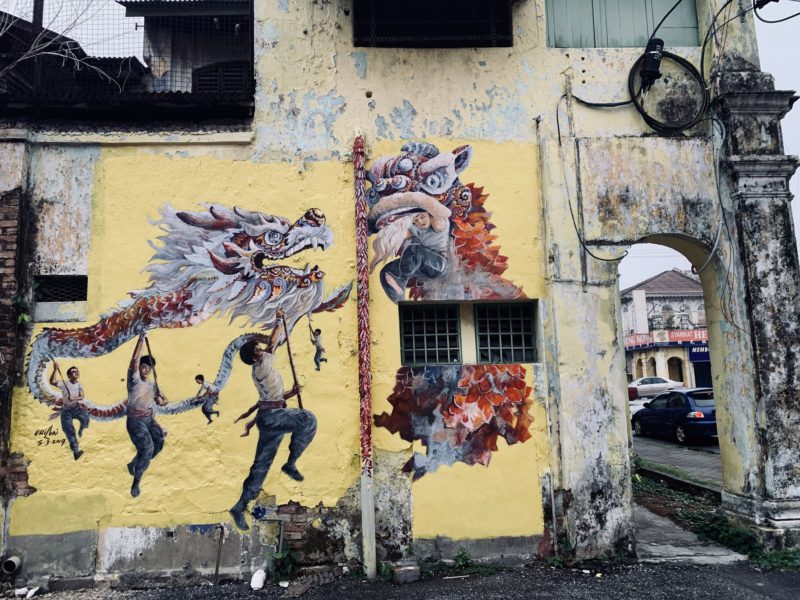
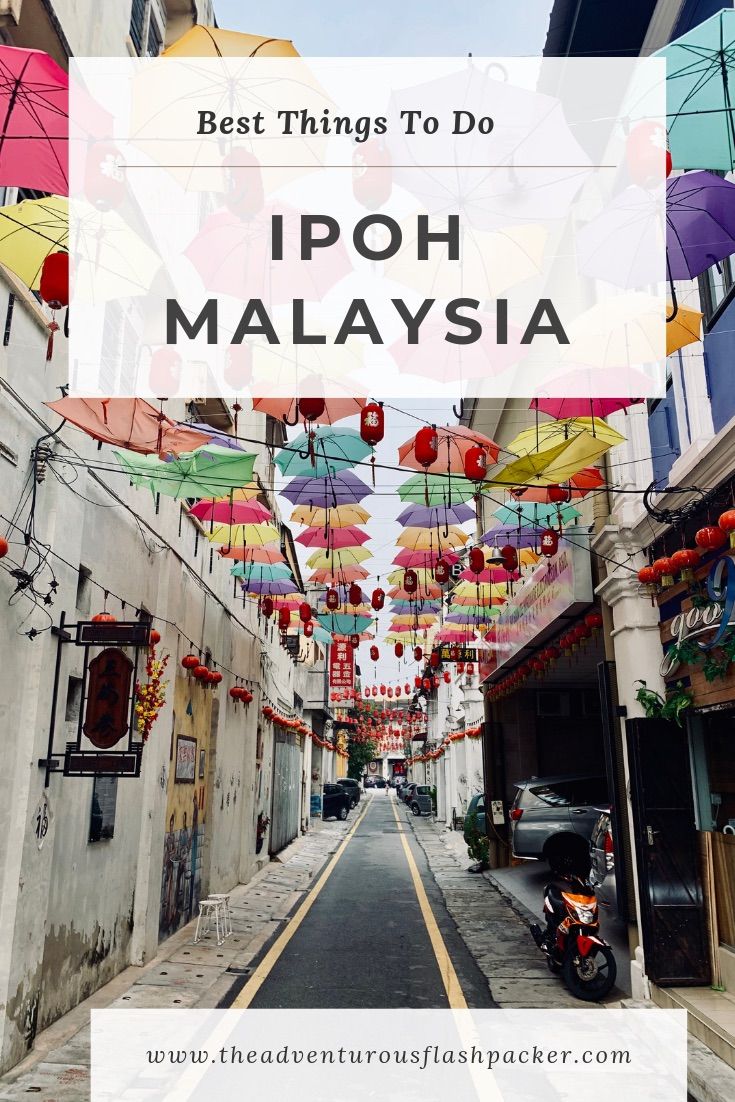
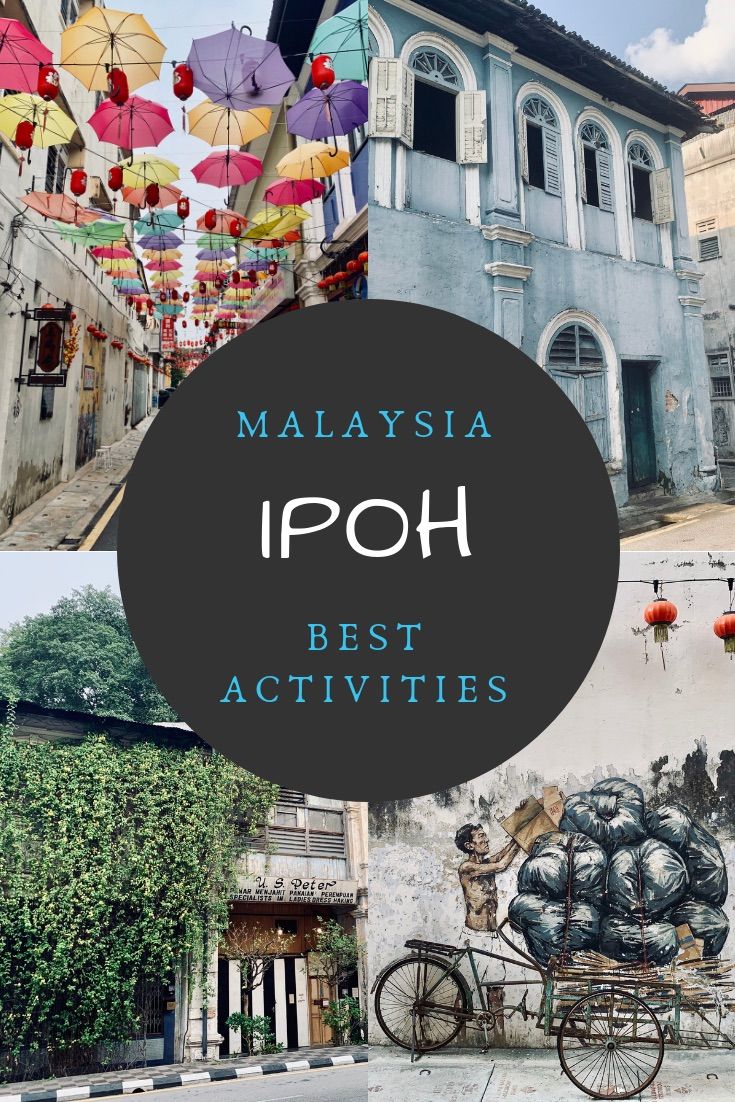
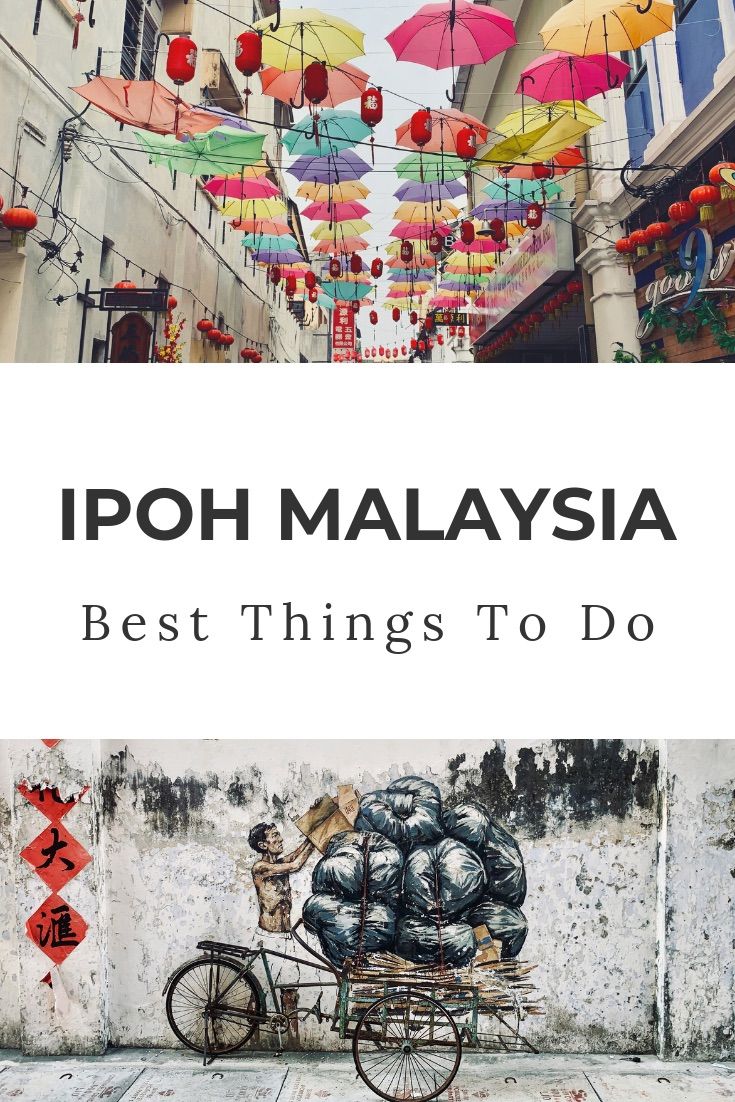
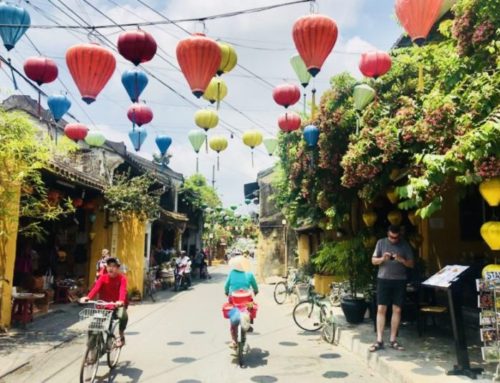
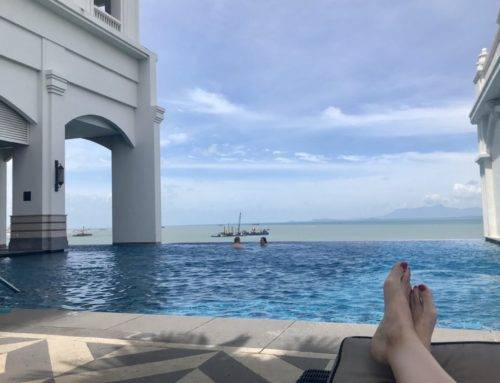
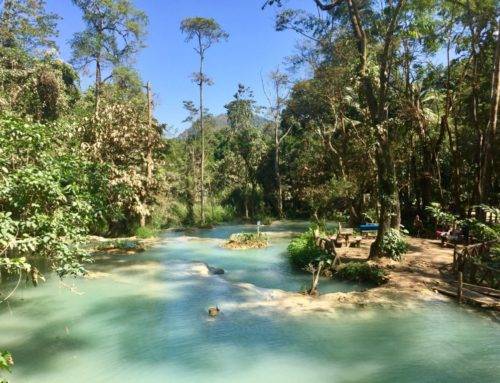
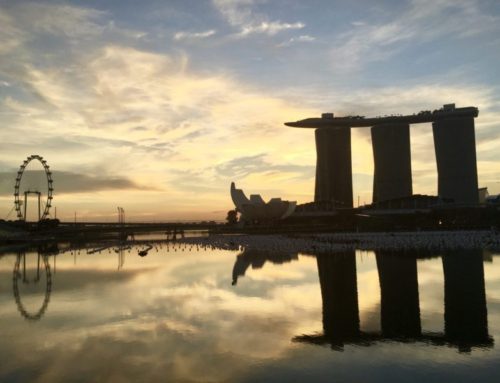

Leave A Comment